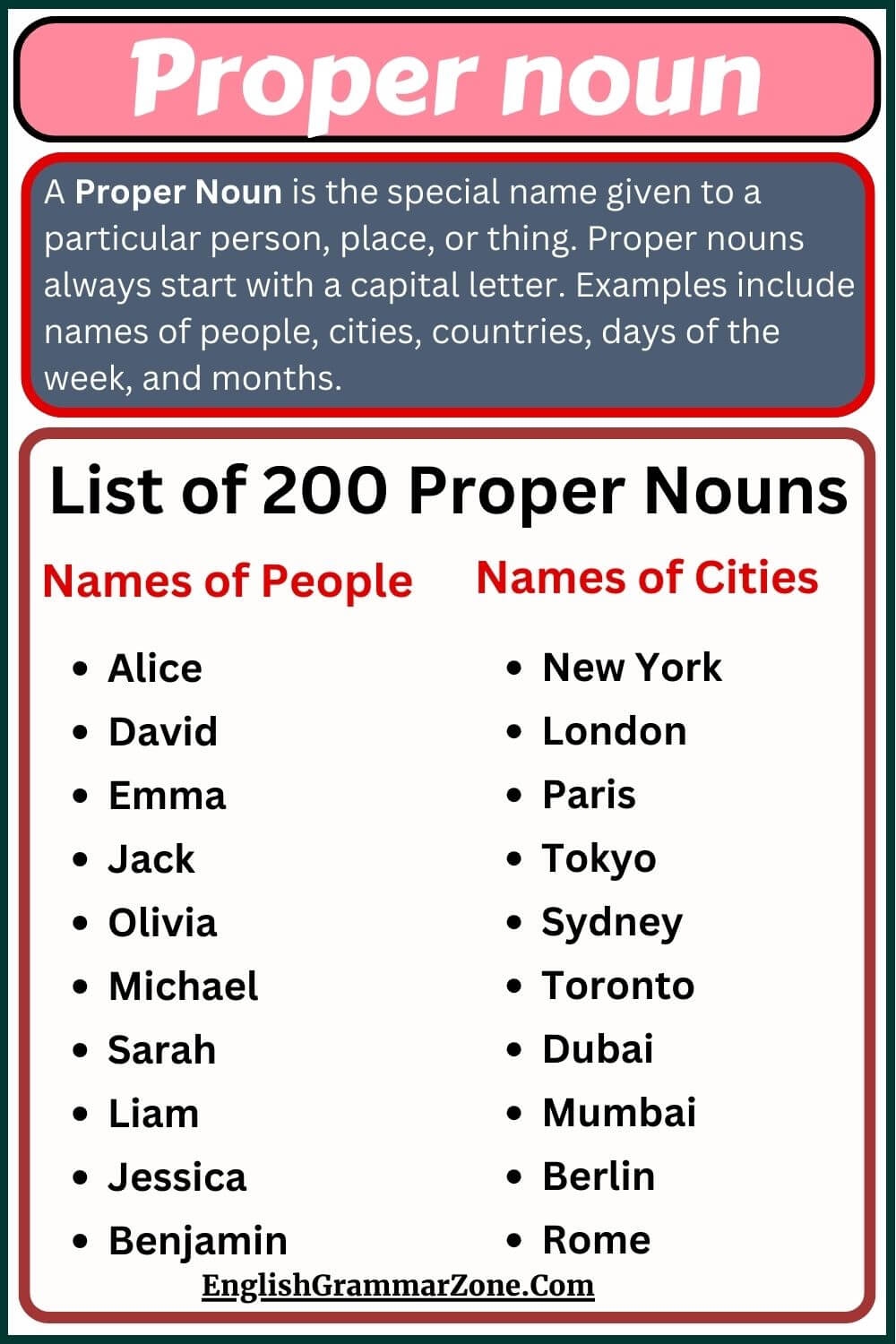Proper nouns are an essential part of the English language, providing specific names for people, places, and things. These nouns are capitalized and serve to distinguish one individual or entity from another. Understanding the definition and usage of proper nouns is crucial for effective communication and clarity in writing.
Proper nouns play a significant role in identifying unique entities and giving them individualized recognition. Whether it’s the name of a person, a country, a company, or a specific title, proper nouns help to pinpoint and differentiate one entity from another. By using proper nouns, we can avoid confusion and ensure that our writing is accurate and precise.
Definition of Proper Noun
A proper noun is a specific name used to identify a particular person, place, or thing. Proper nouns are always capitalized, regardless of their position in a sentence. Examples of proper nouns include names of individuals (e.g., John, Mary), names of cities (e.g., New York, Paris), names of countries (e.g., United States, Japan), and names of companies (e.g., Apple, Google).
Proper nouns are essential for providing clarity and specificity in writing. By using proper nouns, we can avoid ambiguity and ensure that our message is clear and easily understood. Proper nouns help to distinguish between generic terms and specific entities, making our writing more precise and informative.
When using proper nouns, it is important to remember to capitalize the first letter of the noun, even if it appears in the middle of a sentence. This capitalization helps to signal to the reader that the word is a proper noun and not a common noun. By following these rules, we can effectively utilize proper nouns to enhance the clarity and accuracy of our writing.
In conclusion, proper nouns are an integral part of the English language, providing specific names for individuals, places, and things. By understanding the definition and usage of proper nouns, we can improve the clarity and precision of our writing. Proper nouns help to differentiate between entities and avoid confusion, making our communication more effective and impactful.
